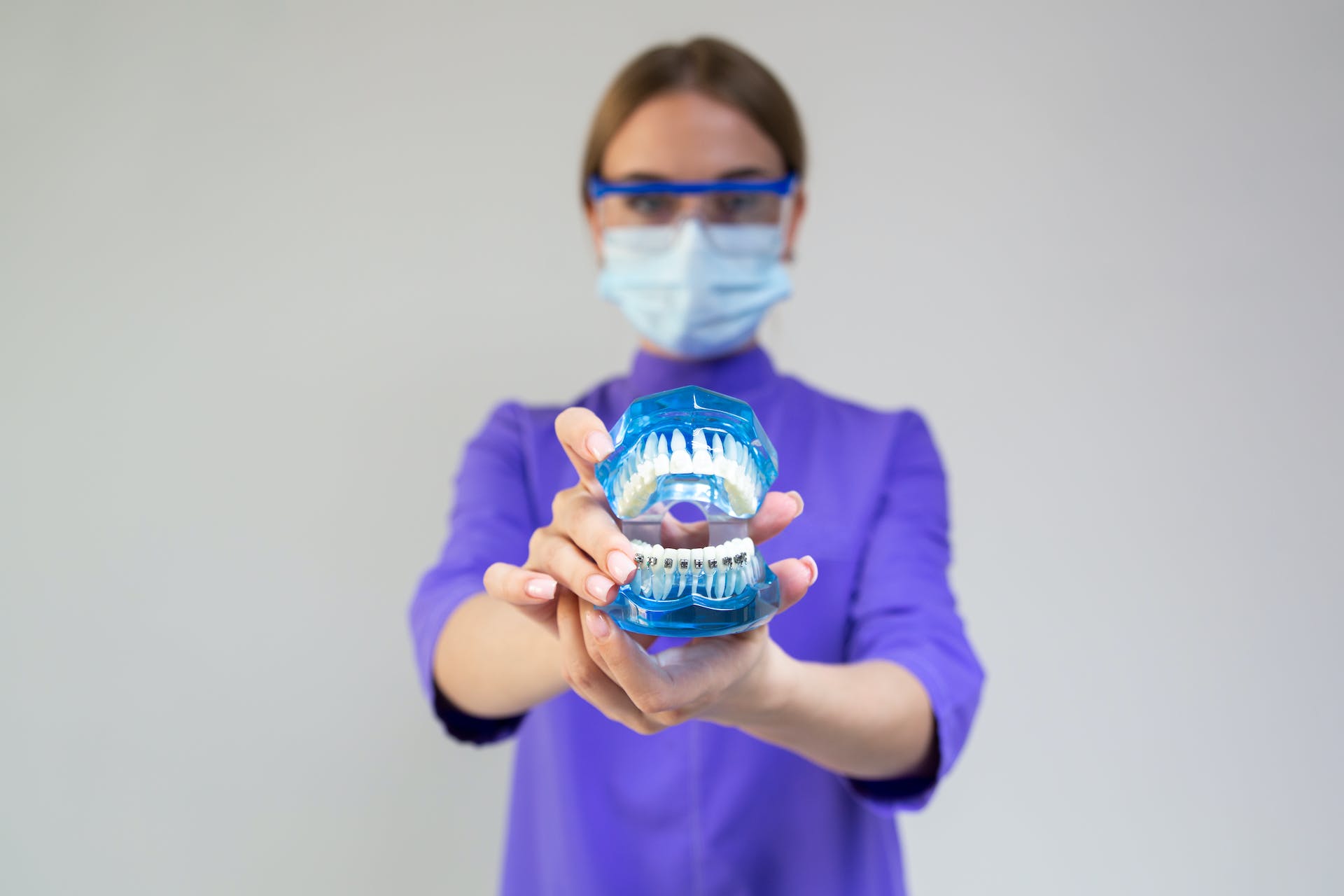Research over the last decade has looked at ways that dental implants can become more effective. The research has led to technology being developed which can improve the performance of dental implants. This can have a number of benefits, including reducing complications, and offering better integration between the implant and the mouth.

Research over the last decade has resulted in the development of technology that looks likely to revolutionize the use of dental implants.
The technology appears to be capable of ensuring near-perfect integration of an implant with a bone, improved healing times, and reduced complications for patients [1].
This is an exciting development in oral healthcare. With dental implants proving very popular, seeing an improvement in treatment outcomes will help many people with their oral health.
What are dental implants?
Dental implants are a popular treatment that mimics the natural tooth. Implants are essentially a titanium screw that replaces the root of a tooth. They are surgically placed in the jawbone, and look and act like a normal tooth.
Implants are used to replace a lost or missing tooth. These teeth are often lost to injury, trauma, or excessive tooth decay.
The success levels of dental implants can vary significantly. In fact, studies show that around 5-10% of implants fail and need to be replaced within 5 years [2]. This usually happens when the jawbone does not fuse to the implant.
One of the main issues is a lack of integration between the implant and the bone and surrounding teeth. This is something that has resulted in plenty of research.
A decade of research: initial problems
The research eventually resulted in the creation of a device which is capable of blasting one minute of ultraviolet (UV) light treatment on titanium implants.
The research was led by Doctor Takahiro Ogawa. Moreover, he had assistance from fellow researchers from the UCLA’s School of Dentistry [1].
Around a decade ago, Ogawa and his team analyzed the current implant situation. They found that the biggest issue was the limited ability to integrate implants with the mouth [1].
Finding a way of advancing integration has been difficult due to the appearance of a layer of hydrocarbons naturally deposited on implant surfaces – called titanium pellicle. These hydrocarbons have been linked to the onset of infections following implant surgery [3].
Furthermore, the researchers found that the implementation of dental implants was also associated with many post-operation complications – most notably with gum disease forming around the implants [1].
Finding ways around the problems
To combat these issues, the team looked at removing the hydrocarbons – which would reduce the obstacles to seeing an improved integration between implant and the mouth’s bones and other teeth [1].
In early trials, they found that this process took 48 hours. While this produced effective results, the length of time was unsuitable. After all, getting a patient to sit down for four days straight prior to implant surgery is not feasible.
Therefore, the team looked at ways that they could shorten this timeframe. Through close analysis, improved efficiency and better technology, the team were able to reduce UV treatment times to just 12 minutes [1].
This was a positive result. However, the researchers wanted to shorten this further, so that it could be completed on a routine basis by a dentist at chairside prior to implant surgery [1]. At first, it didn’t appear that this would be possible.
However, the research team had a breakthrough in late 2022. They used a process called photofunctionalization, which reversed the biological aging of titanium, which helped to increase the integration of implants [4].
They used a xenon excimer lamp in the process, which produced significantly quicker results. In fact, within a minute, the process of photofunctionalization had been completed rapidly [4]. Therefore, this process produced excellent, and fast, results.
The benefits
The researchers were pleased with the process, and created the device. The device is capable of carrying out photofunctionalization within a minute. This helps to ensure the near-perfect integration of an implant with a bone.
UV light-treated implants are capable of producing almost 100% bone integration. Moreover, they have a strong ability to reduce bacterial attraction by up to 60% when compared to non-UV treated implants. Therefore, this results in faster healing and a lower risk of complications [1].
Impressively, the nature of this device means that the process can be done immediately before an implant procedure at chairside – meaning a specialist would not need to operate the device.
Ogawa heralded the findings – suggesting that the research has resulted in dental implants entering “a new era” [1]. Ogawa said that the UV technology “enhances the effectiveness of dental implants”, and also “improves the quality of life for patients” [1].
Overall, this technology enhances the effectiveness of dental implants. Hopefully, this technology will result in improved treatment outcomes for many patients in the future.
Thinking points…
[1] Dental implants are great for anyone who wishes to either have a replacement tooth or install a new tooth for cosmetic reasons. Here at Taradale Dental, we offer our patients dental implants. They are easy to fit, low-risk and appear very natural. Moreover, it can result in improved confidence and self-esteem! We would love for you to get in touch with us for a discussion about implants!
[2] Dental implants are often needed when we lose teeth. It is important to remember that it is possible to avoid losing teeth. The best way of doing this is to ensure that you take great care of your oral health. As part of this, you should make sure that you attend regular dental check-ups, which will allow any problems to be addressed. We recommend booking an appointment now!
What we offer at Taradale Dental
Taradale Dental is a Calgary dental clinic that provide its patients with a wide range of dental treatment options and advice aimed at improving their oral health.
We advise our patients to attend our Calgary dental clinic at least twice per year for a regular dental check-up. At these check-ups, we provide a comprehensive review of a patient’s oral health. If any problems are detected, we have many treatments available. For example, these include cavity fillings and root canals. To strengthen your oral health, we recommend brushing your teeth at least twice a day and flossing regularly.
Here at Taradale Dental, we also have some cosmetic treatments available! These include dental implants, teeth whitening and Invisalign™! Many people find that these treatments have a positive impact on their appearance, confidence and self-esteem.
Moreover, all of our services at our Calgary dental clinic Taradale Dental are set in line with the Alberta Dental Fee Guide. This ensures transparent and fair pricing.
We hope to see you soon at our Taradale Dental clinic in Calgary! You can find out more about us by visiting our website https://taradaledental.ca.
References
[1] The University of California, Los Angeles. (2023). Researchers develop ‘game-changing’ dental implant technology. Available: https://medicalxpress.com/news/2023-11-game-changing-dental-implant-technology.html. Last accessed: 1st December 2023.
[2] Tabanella, G., Nowzari, H., & Slots, J. (2009). Clinical and microbiological determinants of ailing dental implants. Clinical Implant Dentistry. 11 (1): p24-36. DOI: https://doi.org/10.1111/j.1708-8208.2008.00088.x.
[3] Souza, J. G. S., Bertolini, M. M., Costa, R. C., Nagay, B. E., Dongari-Bagtzoglou, A., & Barao, V. A. R. (2021). Targeting implant-associated infections: titanium surface loaded with antimicrobial. iScience. 24 (1): 102008. DOI: https://doi.org/10.1016%2Fj.isci.2020.102008.


